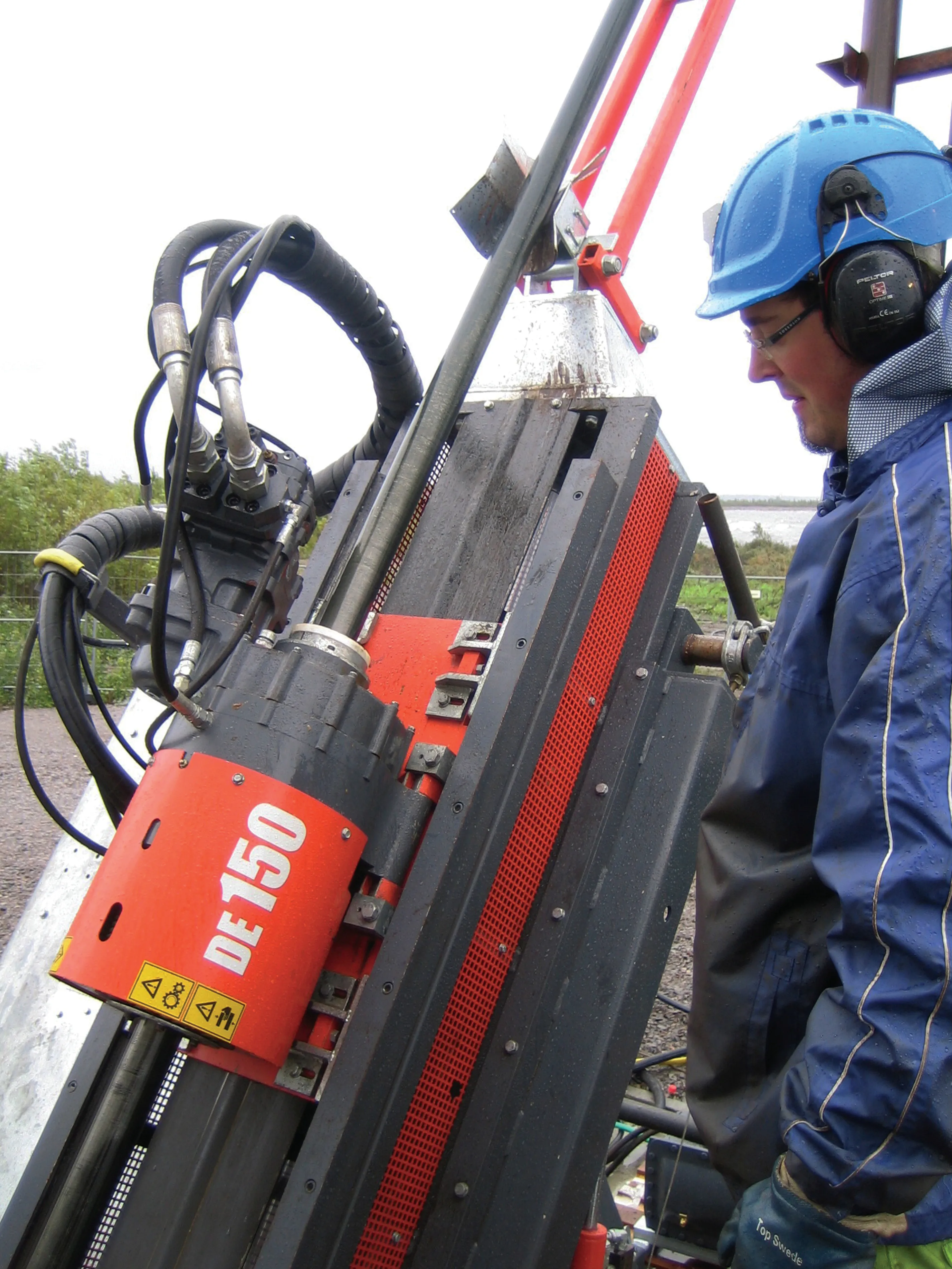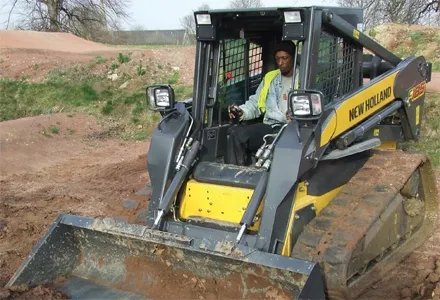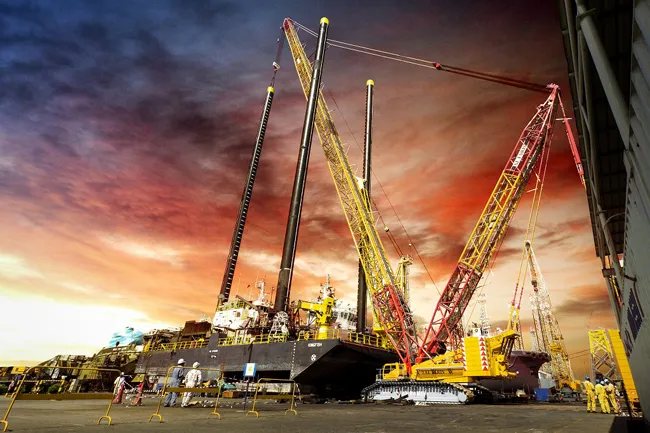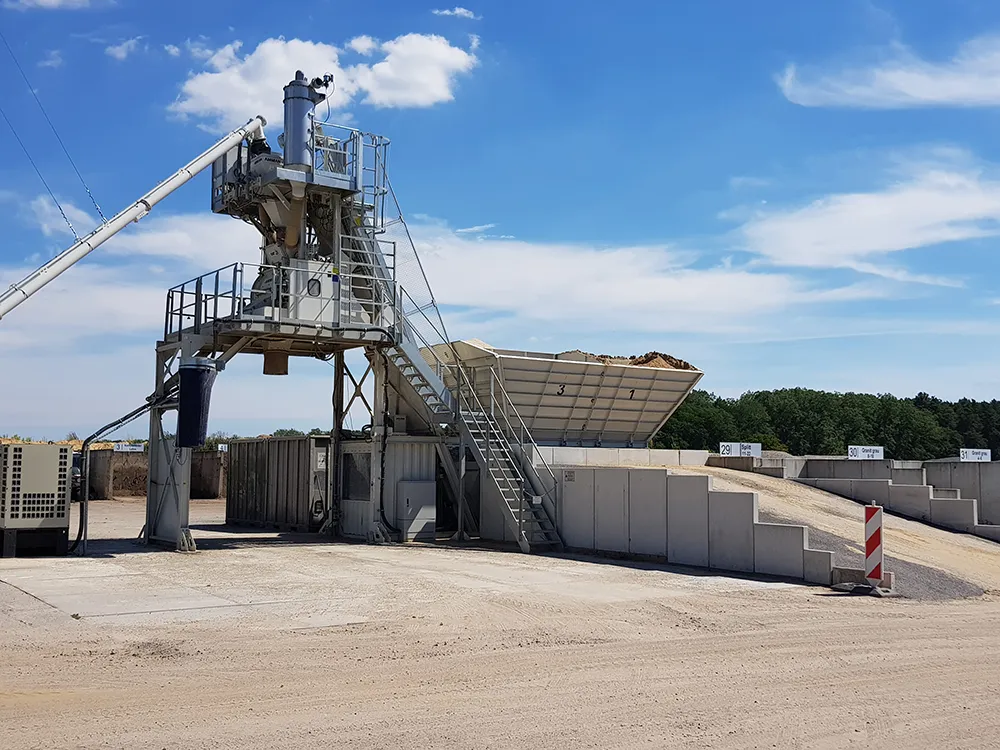The new Sandvik DE150 is Sandvik's most powerful exploration drill rig for underground exploration, and a surface version is under development and will be ready for market in the fourth quarter of 2009. The DE150 (part of the expanded DE100 range) has a hydraulic feed cylinder designed to a push and pull capacity of 15tonnes (147 kN).
February 24, 2012
Read time: 2 mins

The new 325 Sandvik DE150 is Sandvik's most powerful exploration drill rig for underground exploration, and a surface version is under development and will be ready for market in the fourth quarter of 2009.
The DE150 (part of the expanded DE100 range) has a hydraulic feed cylinder designed to a push and pull capacity of 15tonnes (147 kN). Depth capacity is up to 2,000m (NQ rods), and in underground applications the DE150 is powered by a 110 kW electric power unit giving a maximum working pressure of 250 bar and oil flow of 300litres/min.
For surface application the DE150 can be powered by a diesel engine. The drill unit features a stiff and torsion resistant steel profile feed boom and a direct coupled feed cylinder with a feed length of 1,700mm and feed speed of maximum 0.63m/sec. The feed boom is mounted on a frame with tilt cylinder and mechanical supports, and the mounting frame has been specifically designed for quick and easy set-up when fan drilling with a full range of adjustment from vertical down to vertical up.
The group has also introduced its new Drill Shack for safety, health and environment, and to meet the requirements of Sandvik's DE130 and DE140 diamond core drills.
"This innovative and well thought-out solution makes it possible to operate in arctic or sub- tropical climates and is easily transportable by helicopter, packed in compact units or in its entirety by tracked vehicles or mounted on a hook lift frame," says Sandvik.
"The modular design of the new Drill Shack makes it suitable for both mobile and stationary units with quick assembly/pull down."
The DE150 (part of the expanded DE100 range) has a hydraulic feed cylinder designed to a push and pull capacity of 15tonnes (147 kN). Depth capacity is up to 2,000m (NQ rods), and in underground applications the DE150 is powered by a 110 kW electric power unit giving a maximum working pressure of 250 bar and oil flow of 300litres/min.
For surface application the DE150 can be powered by a diesel engine. The drill unit features a stiff and torsion resistant steel profile feed boom and a direct coupled feed cylinder with a feed length of 1,700mm and feed speed of maximum 0.63m/sec. The feed boom is mounted on a frame with tilt cylinder and mechanical supports, and the mounting frame has been specifically designed for quick and easy set-up when fan drilling with a full range of adjustment from vertical down to vertical up.
The group has also introduced its new Drill Shack for safety, health and environment, and to meet the requirements of Sandvik's DE130 and DE140 diamond core drills.
"This innovative and well thought-out solution makes it possible to operate in arctic or sub- tropical climates and is easily transportable by helicopter, packed in compact units or in its entirety by tracked vehicles or mounted on a hook lift frame," says Sandvik.
"The modular design of the new Drill Shack makes it suitable for both mobile and stationary units with quick assembly/pull down."








